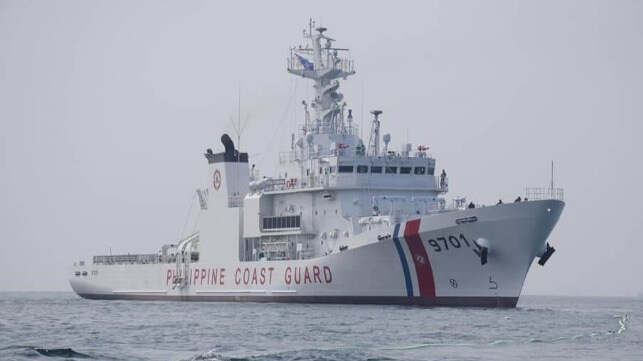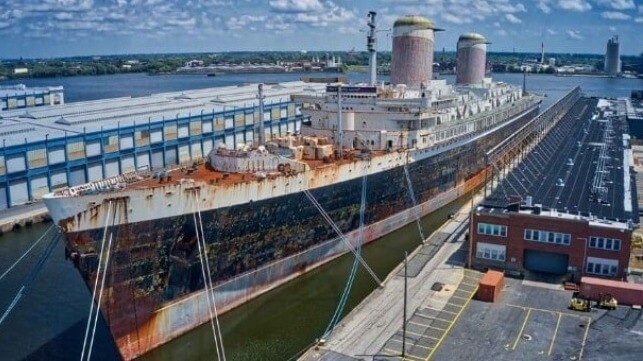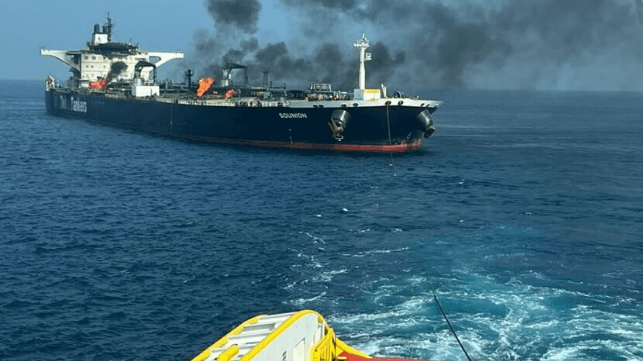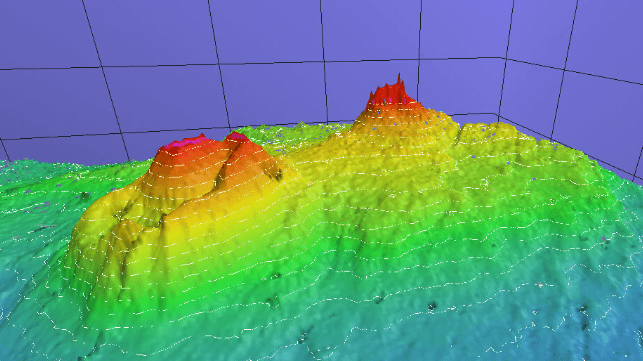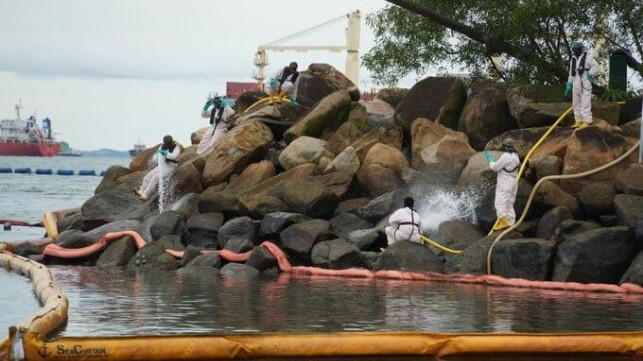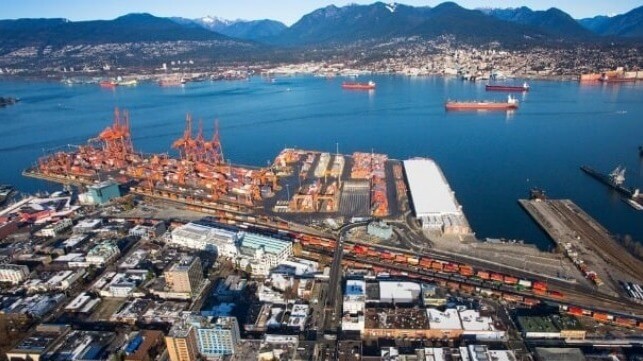The financial and military support that America has offered to Israel for decades is the reason why the Zionist state is able to

Ejaz Haider
“For generations to come, all will be told of the miracle of the immense planes from the United States bringing in the materiel that meant life to our people.”
— Israeli Prime Minister Golda Meir on the United States airlift during the 1973 War
“Things did not go particularly well for Israel over the next couple days, but as Israel started to push back the daily advances, the Nixon administration initiated Operation Nickel Grass, an American airlift to replace all of Israel’s lost munitions. This was huge — planeload after planeload of supplies literally allowed munitions and materiel to seemingly re-spawn for the Israeli counter effort. 567 missions were flown throughout the airlift, dropping over 22,000 tons of supplies. An additional 90,000 tons of materiel were delivered by sea.”
— How Richard Nixon Saved Israel from Nixonfoundation.org
PREAMBLE
The above quotes are facts about Operation Nickel Grass, a United States (US) airlift that was bigger than the Berlin Airlift of 1948-49, and about how Israel found itself fighting for its survival. Since the United Nations Partition Plan for Mandatory Palestine under Resolution 181 of November 29, 1947, the US has been a major ally and supporter of Israel. However, the 1973 War helped change the entire dynamic of that relationship. Since that airlift, the US has committed itself fully and unequivocally to Israel’s defence.
Even when there have been differences about Israel’s conduct, the US has, for the most part, ensured that there must be “no daylight” between the two sides, a phrase attributed to the outgoing US President Joe Biden who self-describes himself as a “proud Irish-Christian Zionist.”
Two days after the publication of this article, the US will be electing a president. Among many other policy concerns, including domestic, a burning question for many Arab and Muslim American voters is which of the two candidates will be a better fit for bringing peace to the Middle East and force Israel to stop its savage genocidal war.
That concern, while totally justified, is largely, if not wholly, misplaced for structural reasons — the US system, which represents the current power relationships, is controlled by what political scientists John Mearsheimer and Stephen Walt called “the Israel Lobby” in a 2007 book, The Israel Lobby and US Foreign Policy.
Mearheimer and Walt call the US-Israel relationship and the US support for Israel a “unique” relationship unparalleled in US history. They also argue that this relationship is not really “based on shared strategic interests or compelling moral imperatives”, as is normally assumed, but “is due almost entirely to US domestic politics, and especially to the activities of the ‘Israel Lobby’.”
There is a lot of literature on how the Israel lobby works. Organisations such as the American Israel Public Affairs Committee (AIPAC) and the Anti-Defamation League (ADL), in combination with big money, Christian Zionists and Israeli hasbara [public diplomacy techniques], work towards damaging politicians, activists and even scholars who are critical of Israel and its policies.
An October 24 report in The Intercept by Akela Lacy, ‘How Does AIPAC Shape Washington: We Tracked Every Dollar’ says AIPAC has “embraced a new strategy” — “It would use its vast funds to oust progressive members of Congress who have criticised human rights abuses by Israel and the country’s receipt of billions of US dollars in military funding.”
Lacy says that “AIPAC’s approach to electoral spending is bipartisan.” The strategy is to support candidates that are pro-Israel and defeat those who are not. Anyone familiar with how Washington DC works knows how legislation and actions by any administration can be influenced if the right people are available in the power corridors.
In addition to financial and military support, the US has lent Israel unqualified diplomatic support since 1972. Globalaffairs.org has estimated that “The US has vetoed resolutions critical of Israel more than any other council member — 45 times as of December 18, 2023, according to an analysis by Blue Marble.” Thirty-three of these resolutions “pertained to the Israeli occupation of Palestinian territories or the country’s treatment of the Palestinian people.”
The financial and military support that America has offered to Israel for decades is the reason why the Zionist state is able to carry out the ongoing genocide in Palestine and war crimes in Lebanon. Regardless of whether Donald Trump or Kamala Harris wins the election on November 5, this US support for its client state will continue, making the US and its Western allies as culpable for Israel’s crimes against humanity
It is instructive to contrast the US’ actual behaviour with its platitudes about a two-state solution as an imperative for peace. The US has also, as I have noted in this space previously, consistently vetoed the push for Palestine’s statehood and full membership of the UN, because statehood bestows on Palestine sovereignty and the right to self-defence. That is not acceptable to either Israel or the US.
COROLLARY
Before proceeding with further details, I want to put the proposition already proved upfront: Israel could not have sustained itself, its unending wars in the Middle East and the structured violence against the Palestinian people without the unique support it gets from the US and some Western allies of the US.
That support spans the entire gamut of diplomatic, financial and military. This is also true of the current iteration of the Palestinians’ generational war against Zionism. Israel could not have sustained its continuing war without the full and unconditional diplomatic, financial and military support of the US.
That fact gives us a simple reality: the US is not an honest broker and cannot be expected to work towards an equitable resolution of the Palestine problem. It is complicit in everything Israel does and, by shielding it from the consequences of its crimes against humanity, the US is answerable for those crimes. This is also true of the ongoing war.
This also means what I have previously said in this space: this war will continue with its many ebbs and flows. It can only end with the end of Zionism.
ISRAEL’S DESPERATION: A PAGE FROM HISTORY

At 1400 hours on October 6, 1973, Egypt and Syria launched a coordinated surprise attack against Israel, along the Golan Heights and across the Bar Lev Line on the eastern bank of Suez Canal. Egyptian forces overran the presumably invincible Bar Lev line in just two hours, even though Israeli defence minister Moshe Dayan had famously called it “one of the best anti-tank ditches in the world.”
In the months leading up to the War, the Egyptians and Syrians had modernised their forces by purchasing Scud Surface-to-Surface Missiles from the Soviet Union to offset Israel’s air superiority. The first few days of the war saw dozens of Israeli fighter jets, tanks and APCs destroyed.
The US Department of State archives have a Memorandum of Conversation from October 9, 1973 between Israeli ambassador to the US, Simcha Dinitz, his military attaché Gen Mordechai Gur, and US Secretary of State Henry Kissinger and Gen Brent Scowcroft, deputy assistant to the US president for national security affairs. The contents of that conversation give a clear sense of Israeli losses and the panic that was setting in:
Dinitz: “We got a message which sums up our losses until 9am Israeli time. In planes, 14 Phantoms, 28 Skyhawks, 3 Mirages, 4 Super Mysteres — a total of 49 planes. Tanks — we lost something like 500 tanks. Some were lost on the way.”
Kissinger: “500 tanks! How many do you have? [to Scowcroft:] We should get Haig here. Well, we can give him the figures….
Kissinger: Explain to me, how could 400 tanks be lost to the Egyptians?“
Gur: “We were in a very big hurry to bring them to the front line. That’s why we say some were lost on the way to the battle.”
Dinitz: “Some got out of commission because of moving so fast.”
Scowcroft: “Do you know how many were battle losses?”
Gur: “Some were hit by artillery fire on the Suez Canal. They have heavy artillery fire. We don’t know the exact numbers. I assume the biggest number were put completely out of action.” [Gen Gur then pulls out a map and sits beside Kissinger.]
According to the Stockholm International Peace Research Institute (SIPRI), Israel is spending much more per month on the military — from $1.8 billion before October 7, 2023, to around $4.7 billion by the end of last year. According to several Israeli economists, the Gaza war alone has cost the Israeli economy over $67.3 billion.
This conversation also coincided with the October 9 Israeli counterattack that failed. Kissinger was concerned that an Israeli defeat would increase the prestige and footprint of the Soviets in the Middle East. This was also Nixon’s concern, though he also, initially, did not want to antagonise the Gulf monarchies.
The US secretary of defence, James Schlesinger, who went along with the decision, was not particularly in favour of US support to Israel. As the October 6 ‘Minutes of Washington Special Actions Group Meeting’ show, Schlesinger said, “We can delay on this. Our shipping any stuff into Israel blows any image we may have as an honest broker.”
Schlesinger also sent a memorandum to President Nixon on November 1. Subject-lined ‘Impact of the Mideast War’, Schlesinger wrote, “This memorandum provides my initial reaction to the recent Mideast crisis and to the transfer of military equipment to Israel… I am concerned… by the degradation of our conventional deterrent due to the loss of critical materiel.” [Emphasis added]
Kissinger was very unhappy with Schlesinger’s objections and told the White House Chief of Staff, Alexander Haig, “They [Israelis] are anxious to get some equipment which has been approved and which some SOB in [the Department of] Defence held up which I didn’t know about.” Golda Meir had made a panicked phone call to President Nixon. That call became the basis for the massive US airlift of materiel to resupply Israel to offset its losses in the first few days of the war.
Kissinger would bring in other arguments, particularly the broader strategic concerns about the Soviet Union but, in the end, it was about Israel itself and America’s pledge to defend it. The dialogue in the Golda biopic about Kissinger (Liev Schreiber) telling Golda (Helen Mirren) that he is an American first, secretary of state second and a Jew only third, and Golda telling him that, in Israel, “we read from right to left”, was not just for dramatic purposes. It was an actual conversation that Kissinger would often narrate.
That support has continued. But how does it work?
HOW DOES THE US SUPPORT ISRAEL MILITARILY?

The two countries do not have a mutual defence pact, but Israel has privileged access to the most advanced US military platforms and technologies. In cumulative terms, Israel has been the largest recipient of US foreign aid since its founding and has received over $300 billion in economic and military assistance.
According to a Council on Foreign Relations (CFR) report, “The United States provided Israel considerable economic assistance from 1971 to 2007, but nearly all US aid today goes to support Israel’s military, the most advanced in the region. The United States has provisionally agreed, via a memorandum of understanding (MOU), to provide Israel with $3.8 billion per year through 2028.”
As Mearsheimer and Walt have noted, “This largesse is especially striking when one realises that Israel is now a wealthy industrial state with a per capita income roughly equal to South Korea or Spain.”
The CFR report also mentions that, since October 7, 2023, the US “has enacted legislation providing at least $12.5 billion in military aid to Israel, which includes $3.8 billion from a bill in March 2024 (in line with the current MOU) and $8.7 billion from a supplemental appropriations act in April 2024.”
The yearly military aid is actually grants under the Foreign Military Financing (FMF) programme. While Israel must use these funds to purchase US military equipment and services, it can use about 25 percent of these funds to buy equipment from Israeli defence firms. It also buys US equipment outside of the FMF facility. Until last October, as per the Biden administration, “Israel had nearly 600 active FMF cases, totalling around $24 billion.”
Separately, an annual $500 million fund is slated for Israeli and joint US-Israeli missile defence programmes. These programmes involve joint collaboration “on the research, development and production of these systems used by Israel, including the Iron Dome, David’s Sling, and Arrow II. Iron Dome was solely developed by Israel, but the United States has been a production partner since 2014.”
While transfers of US military equipment to Israel are subject to relevant US laws and scrutiny by the Congress, in reality Israel gets a clear pass from US administrations. For instance, during the ongoing war, multiple rights organisations, UN bodies and the International Court of Justice have determined constant violations by Israel of International Law and International Humanitarian Law. Despite clear evidence, the Biden administration has continued to shield Israel, including from the application of US laws such as the Leahy Law.
US State Department official Stacy Gilbert quit last May and told the media that her resignation was precipitated by an administration report to Congress that, she said, falsely stated Israel was not blocking humanitarian aid to Gaza. The true picture would have brought the Leahy Law into action and prevented further US military aid to Israel.
Just days ago, Maryam Hassanein, a political appointee at the US Department of the Interior, quit over the war on Gaza, saying, “I saw a policy that was really harming Palestinians through this kind of blind, destructive support of Israel and its occupation.”
While the US Congress can block a sale through a joint resolution, this has never happened in the case of Israel. In fact, since this war, as with special cases, Biden has bypassed the congressional review and used this waiver process both for Ukraine and Israel.
Additionally, the US has another special arrangement for Israel called ‘qualitative military edge’ (QME), which was formalised through a 2008 law. The law reads: “The [US] President shall carry out an empirical and qualitative assessment on an ongoing basis of the extent to which Israel possesses a qualitative military edge over military threats to Israel. The assessment required under this sub- section shall be sufficiently robust so as to facilitate comparability of data over concurrent years.”
The CFR report calls QME “a conceptual backbone of US military aid to Israel.” The 2008 law “requires the US government to maintain Israel’s ability ‘to defeat any credible conventional military threat from any individual state or possible coalition of states or from non-state actors, while sustaining minimal damage and casualties.’”
In simple terms, it means that the US must not provide any weapons or platforms to any state in the Middle East that could compromise Israel’s QME. Or, if it does in some way, it must provide counter-measures to Israel, to offset any disadvantage to Israel.
The US also maintains a strategic stockpile of weapons in Israel since the 1980s. Israel has been drawing from that stockpile during its ongoing war. Given Israel’s consumption of interceptors, the US also “agreed to lease Israel two Iron Dome missile defence batteries that Washington had previously purchased from the country.”
The military aid provided to Israel by the US, the UK, Germany and France includes tank and artillery ammunition, bombs, rockets, small arms, interceptors, surveillance drones, night-vision goggles, body armour etc. At least $18 billion of aid, including 50 F-15 fighter jets are also in the pipeline, though that supply won’t materialise for some years.
This is by no means an exhaustive treatment of US support for Israel. There are hundreds of assessments out there and most are available to any diligent researcher. The essential point is that, without this unconditional military, financial and diplomatic support, Israel could neither sustain its current war nor its place in the comity of nations through the hubris it has consistently displayed. This hubris includes Israel’s government declaring the UN Secretary-General persona non grata, the Israeli military targeting UN aid workers and premises, and its Knesset (parliament) legislating to ban the UN Relief and Works Agency (UNRWA) — the primary agency delivering humanitarian aid to Palestinians in Gaza — from the areas under Israeli control.
It should also be clear that this sustainment works at two levels: the Israeli lobby’s ability to influence US domestic politics sustains the presence of pro-Israel politicians within US power structures; and the presence of those politicians, in turn, helps preserve the unique US-Israel relationship, which allows Israel to sustain its wars, violate international norms and continue to repress the Palestinians.
So, why is sustainment important? What does it mean?
WHAT IS SUSTAINMENT?
Sustainment is the ability of a nation and its military to fight and sustain that fight. Sustainment in a non-kinetic sense also means the ability of a state to override international legal norms and act independently, without suffering any consequences. Since the point about sustainment at the second level should already be obvious, I will stick to military sustainment.
This point, as any student of war knows, is crucial. Attritional wars are all about sustainment. Wars are expensive; long wars are very expensive. They take a toll on men and materiel.
To quote from a 1942 US Naval College report titled ‘Sound Military Decision’: “Success is won, not by personnel and materiel in prime condition, but by the debris of an organisation worn by the strain of campaign and shaken by the shock of battle. The objective is attained, in war, under conditions which often impose extreme disadvantages.” [Emphasis added]
Initial planning can go awry; initial supplies can run dry or troops can run low on them; logistics are crucial — you can have the best troops and equipment, but battles take their toll. Men get killed; materiel gets destroyed. Nothing remains in prime shape.
Modern war requires a very complex logistics and supply system with multiple tiers. The Table of Organisation and Equipment (TOE), a document in modern militaries, not only details the wartime mission, capabilities, organisational structure, and mission-essential personnel, but also supply and equipment requirements for military units.
Tanks, armoured personnel carriers and self-propelled artillery — all essential components of manoeuvre warfare — are very logistics-heavy. A typical armoured division would have supplies based on troop strength, such as rations; items listed and identified in the TOE (clothing, personal equipment, vehicle replacements, etc); POL (petrol, oil, lubricants); supply requirements for damaged equipment which cannot have a fixed quantity and would depend on attrition rates; and, yes, ammunition.
This brings us to the nexus between fighting and sustaining a war and a state’s economy. To quote US Rear Admiral Henry Eccles, “logistics is the bridge between military operations and a nation’s economy.” The linkage is not just about existing stocks and how reduced human resources and materiel can be replenished, but also the industrial base that can supply to the fighting troops what they need.
Rations, POL, replacement of damaged equipment, cannibalising equipment and vehicles, replenishing ammunition, evacuating casualties — the list of what needs to be done is long and everything that needs to be done gets done (or doesn’t) under fire. But most importantly, all of it requires money and a pipeline.
Israel’s extensive use of aerial platforms, including fighter jets, is a very expensive proposition. For instance, according to the US Government Accountability Office, a nonpartisan agency that provides information to the US Congress, the per-hour flight cost of an F-16 Fighting Falcon is $26,927, while that for an F-35 is $41,986.
The calculation metrics involve repair parts, depot and field maintenance, contract services, engineering support and personnel, plus “other things”, such as sortie-generation rate, pilot training etc. This cost might differ with different air forces but is a good benchmark to roughly monetise Israel’s use of aerial platforms over a year against targets in Gaza, Lebanon, Syria and Iran.
Similarly, the Tamir interceptor for the Iron Dome system costs $50,000-100,000 per interception. According to Brig-Gen Ram Aminach, the former financial adviser to the Israeli chief of staff, “the cost of defence last night [April 13 Iran attack] was estimated at between four to five billion shekels [$1.08-1.35B].” He was speaking to the Israeli Hebrew-language newspaper Yedioth Ahronoth.
According to the Stockholm International Peace Research Institute (SIPRI), Israel is spending much more per month on the military — from $1.8 billion before October 7, 2023, to around $4.7 billion by the end of last year. According to several Israeli economists, the Gaza war alone has cost the Israeli economy over $67.3 billion.
Yet another crucial aspect of how the US sustains Israel’s war is the close cooperation between US Central Command (CENTCOM) and Israeli military and intelligence agencies.
Since January 2021, following a Pentagon decision to shift Israel from US European Command (EUCOM) to CENTCOM — an arrangement described by YnetNews.com in an August 24, 2024 report as “the American wall of defence around Israel” — the US is sharing intelligence with Israel and providing it complete air defence support against Iran. That support has been on display in the two direct rounds exchanged between Iran and Israel since April this year.
By all evidence, Israel does not have the stocks to fight a long war, nor can it produce them in the volumes it requires. The fact that must be known and constantly reiterated is simple: Israel’s war has been sustained by the US and its Western allies.
The corollary is simple: even as the US has been mouthing its desire for a ceasefire, it has been perpetuating Israel’s war. And given the savagery of this war, it is also complicit in every war crime committed by Israel.
The writer is a journalist interested in security and foreign policies. X: @ejazhaider
Published in Dawn, EOS, November 3rd, 2024






